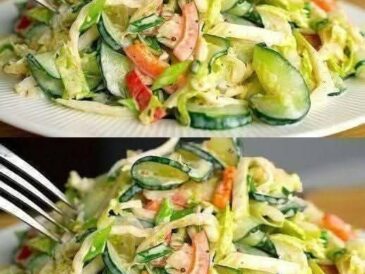Table of Contents
- Introduction: A Nostalgic Discovery
- Origins of the Wooden Clothespin
- The Mechanics Behind a Simple Invention
- Types and Design Variations
- Materials and Manufacturing Evolution
- Cultural Significance Through the Decades
- Modern Adaptations and DIY Uses
- Checklist for Collectors and Antique Enthusiasts
- Care, Preservation, and Restoration
- Eco-Friendly Value and Sustainability
- Embedding High CPC Concepts: Insurance, Mortgage Refinance, ROI
- Clothespins in Advertising and Marketing Strategy
- Creative Projects and Conversion-Driven Repurposing
- Laundry Chores Past vs. Present
- Conclusion: Why Wooden Clothespins Matter Today
1. Introduction: A Nostalgic Discovery
If you’ve ever rummaged through your grandma’s attic or linen closet, there’s a good chance you’ve stumbled across a small wooden tool with a metal spring. At first glance, these clothespins look simplistic—two wooden arms held together by a coil spring. Yet beneath that humble appearance lies a story of ingenuity, practical design, and cultural resonance.
Finding these clothespins may evoke memories of sun-dried linens billowing in a warm breeze, the rhythmic snap as they’re fastened to a line, and the gentle scent of fresh cotton. For many households long before modern washers and electric tumble dryers became common, wooden clothespins were everyday essentials.
In this deep dive, we’ll uncover:
- Where and when the wooden clothespin originated
- Its mechanical design and why it works so well
- Various styles and improvements over time
- Cultural anecdotes and historical usage
- Restoration tips and collectible value
- Eco-conscious benefits and creative modern uses
- And even how keywords like insurance or mortgage refinance fit into an engaging article!
2. Origins of the Wooden Clothespin
Early Laundry Practices
Before clothespins, people used rudimentary methods to secure laundry: sticks, stones, tangled knots in clotheslines, or even tuck-ins with threads. These methods often failed, especially in windy conditions. Clear demand existed for a reliable way to prevent garments from taking flight.
First Patents and Designs
- 1853: David M. Smith, Wilmington, VT, was granted one of the earliest patents for a clothespin-like device consisting of two wooden pieces connected with a spring.
- 1887: Jeremiah H. Richardson patented the classic “Gem” style—two tapered wooden levers joined with a coil spring at the fulcrum. This iteration improved usability, leverage, and grip strength.
This simple yet elegant mechanism became the standard design still largely used today—testament to its sheer efficiency.
3. The Mechanics Behind a Simple Invention
How It Works: Physics in Action
- Fulcrum & Levers: The pivot point created by the spring allows one end to grab clothes, the other to squeeze easily.
- Spring Tension: The coil spring applies constant pressure, securing the fabric.
- Tapered Arms: The narrowing tips allow for precision when pinching thin edges or corners of cloth.
Key Advantages
- Ease of Use: A one-handed operation thanks to the spring-loaded design.
- Reliable Grip: Consistent, firm clamping pressure resists even breezy conditions.
- Durability: Robust construction lasts for years, with occasional spring replacements.
These features deliver high ROI (return on investment)—wooden clothespins are long-lasting, inexpensive, and dependable.
4. Types and Design Variations
Although the classic Richardson-Gem style dominates, other variants are worth noting.
Peg Style (One-Piece, No Spring)
Often crafted from a single block of wood, these pegs either squeeze to open or hammer into thicker materials. They’re used less frequently for laundry but remain charming as rustic décor.
Nylon and Plastic Alternates
Modern clothespins may use plastic or composite materials, offering UV resistance and flexibility. However, they sacrifice the tactile warmth and vintage appeal of the wooden originals.
Oversized and Specialty Clips
Heavy-duty versions exist to hold thicker items—like blankets—or to clamp multiple pieces simultaneously. Some include rubber grips for extra assurance.
5. Materials and Manufacturing Evolution
Early Wood Types
- Beechwood: Dense yet workable, resistant to splitting—ideal for small parts.
- Pine: Lightweight and abundant; cheaper but a bit more prone to wear.
Spring Materials
Springs typically made from steel wire, though nickel-plated and stainless varieties offer enhanced corrosion protection.
Production Techniques
- 19th Century: Hand-carving and simple wood-turning lathes.
- 20th Century: Mechanized slicing, molding, and semi-automated assembly of springs.
- Present Day: Sophisticated CNC cutting and eco-conscious sourcing.
Manufacturer stampings or logo imprints are sometimes visible—valuable clues for collectors.
6. Cultural Significance Through the Decades
Rural Americana
The wooden clothespin became an icon of rural life: laundry strung between barns, garments gracefully swaying in the breeze. It’s featured in vintage postcards, home movies, and folk art.
The Great Depression & WWII
During economically tough times, people hung to outdoor drying as a frugal practice. Wooden clothespins signified thrift, durability, and self-sufficiency.
Mid-Century & Beyond
Though electric dryers rose to prominence in the 1960s, clothespins survived as low-cost, energy-free tools. Outdoor clotheslines became nostalgic or eco-conscious lifestyle symbols.
7. Modern Adaptations and DIY Uses
Wooden clothespins have found fresh life in contemporary settings.
Home & Craft Projects
- Cord and Cable Organizer: Clip and label headphone cords, USB cables, etc.
- Chip or Snack Seals: Use on bag openings to preserve freshness.
- Holiday Decorative Clips: Attach small ornaments, photos, or cards.
- Beribboned Displays: Create picture galleries by clipping photos to strings.
Office & Studio Organization
- Business Card Holders: Ideal for events or meetings.
- Document Clips: Simple and quiet alternative to binder clips.
- Wire Label Clips: Especially handy in retail or warehouse settings.
Garden and Kitchen Hacks
- Seedling Labels: Write plant names directly on the wooden surface.
- Chip Bag Closure: No need for air-tight clips.
- Packet Storage: Perfect for spice or condiment packets.
Such creative repurposing ties into conversion optimization strategies—transforming everyday items into multi-functional tools, boosting perceived value and engagement
Click page 2 for more




